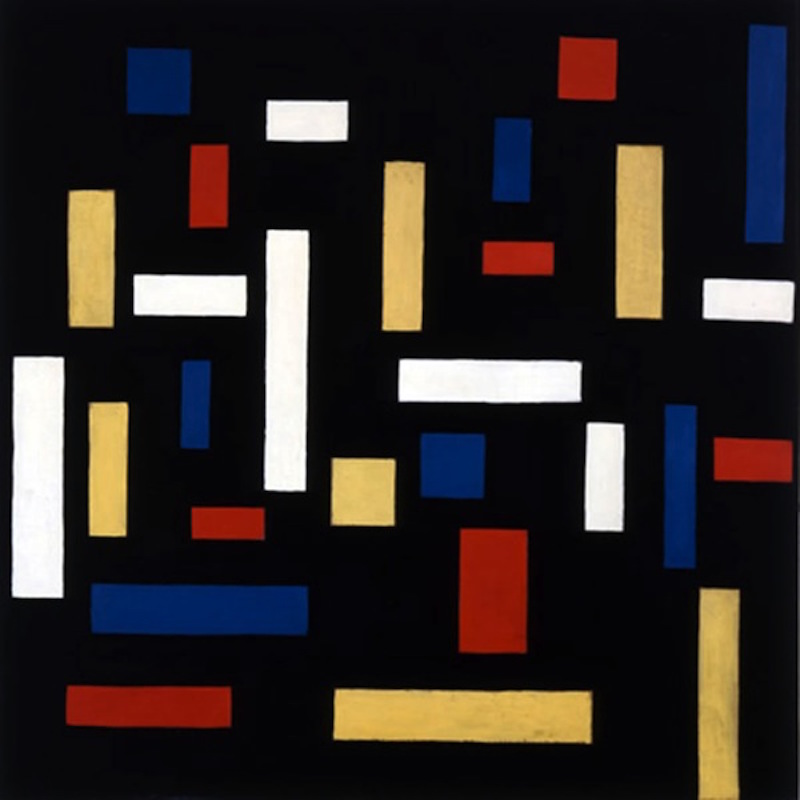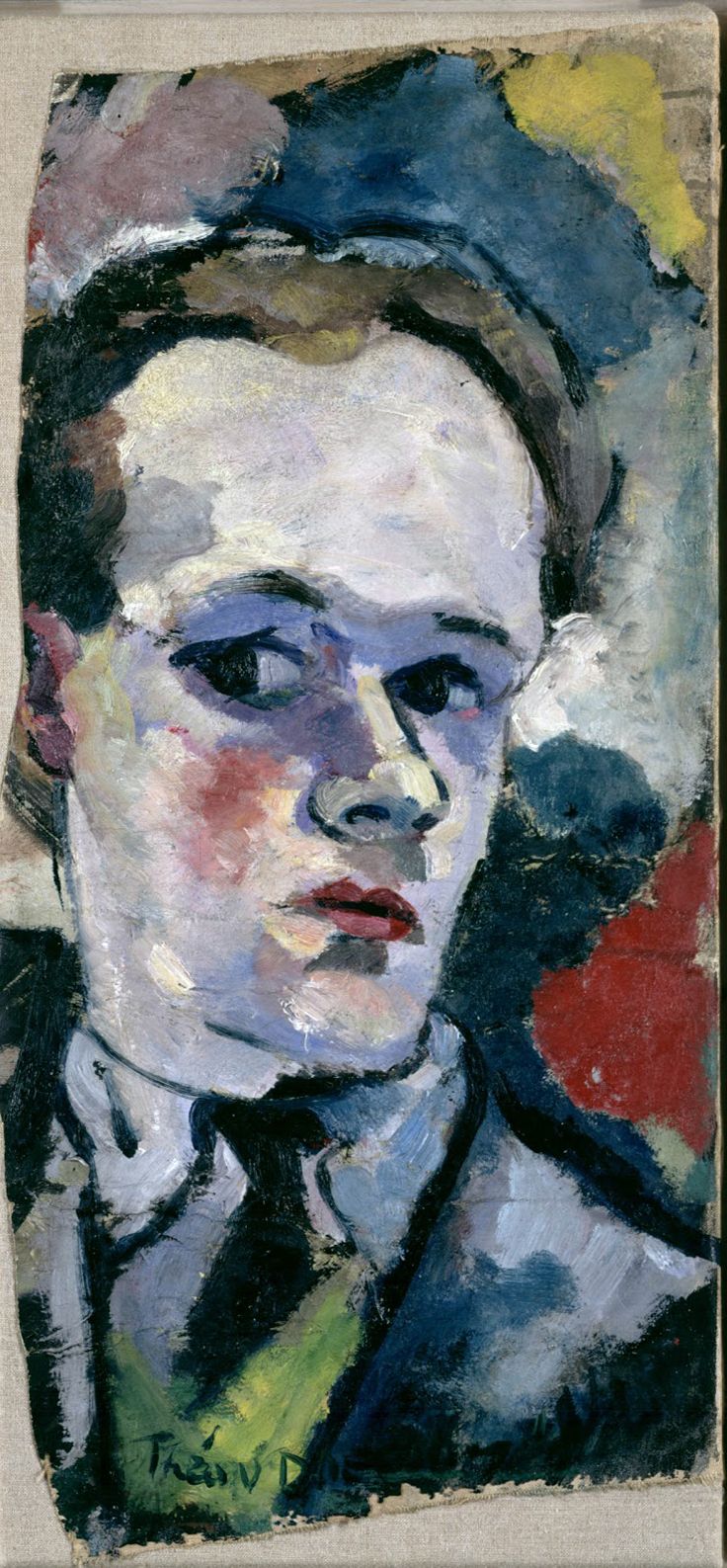



Composition VII (the three graces)
oil on canvas • 33 1/2 x 33 1/2 "
A founding member of De Stijl, Theo van Doesburg was a prodigious talent interested in painting, sculpture, graphic design, architecture, urban planning, and criticism. He was also associated with the Bauhaus and Dada movements after World War I. Compositie VII demonstrates the principles of De Stijl, a group composed primarily of Dutch painters and architects who focused on geometric abstraction and were heavily influenced by the architectonic forms and grid-based compositions of Piet Mondrian. Established in 1917 in reaction to the absurdity and irrationality of the world after World War I, De Stijl artists proposed - somewhat paradoxically - a rational art based on utopian theories. They sought the spirit of equilibrium and simplification through harmonious depictions of basic formal elements and relationships found in art and nature. In Compositie VII van Doesburg applied this concept to vertical and horizontal rectangles painted in primary colors - blue, yellow, and red - plus white, all flat on a flat black ground. The result is an image of irreducible forms that disrupts the usual distance between foreground and background, creating a unified and self-contained work of art in which all elements are interdependent.
 Theo van Doesburg
Theo van Doesburg